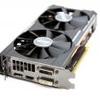Graphics Card Thermal Imaging Measurements (FLIR)
Thermal Imaging Temperature Measurements
Over the past years we have been trying to figure out what the best possible way is to measure temperatures on hardware. Multiple options are available but the best thing to do is to visualize heat coming from the product or component being tested. The downside of thermal imaging hardware is simple, FLIR camera's with a bit of decent resolution costs up-to 10000 EUR. Hence we passed on it for a long time.With a thermal imaging camera a special lens focuses the infrared light emitted by all of the objects in view. This focused light is scanned by a phased array of infrared-detector elements. The detector elements create a very detailed temperature pattern called a thermogram. It only takes about one-thirtieth of a second for the detector array to obtain the temperature information to make the thermogram. This information is obtained from several thousand points in the field of view of the detector array. The thermogram created by the detector elements is translated into electric impulses. The impulses are sent to a signal-processing unit, a circuit board with a dedicated chip that translates the information from the elements into data for the display. The signal-processing unit sends the information to the display, where it appears as various colors depending on the intensity of the infrared emission. The combination of all the impulses from all of the elements creates the image. We can see hotspots on the PCB indicating, for example, GPU but also VRM temperature as well as how heat is distributed throughout a product. We do hope you will enjoy this new technology as it did cost us an arm and a leg to be able to implement it.
Unfortunately the back-plate covers the backside of the GPU area on the PCB. I've however highlighted some hot-spots. The card doesn't run that hot though.
When we position the thermal camera outwards we can see that the overall cooler design really works well. The hottest point is the top side of the card where there is some residual PCB heat detected from a hotspot zone where the VRM area is located.
The card does not bleed any heat onto the motherboard. You can clearly see the VRM area (located just before the GPU) heat up towards 71 Degrees C though. However that is way within spec.




